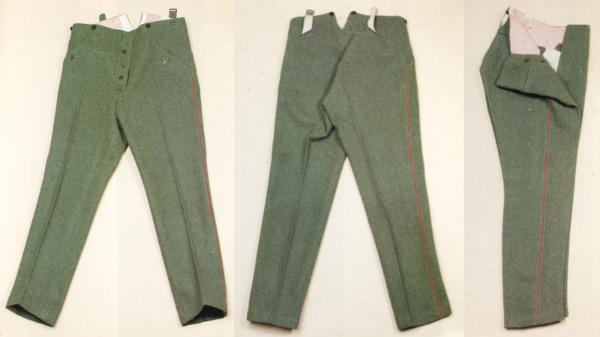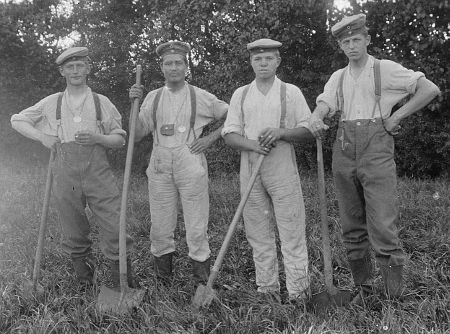Main Menu

Feldhose - M.1907/10 oder M.1917 (Trousers)
All troops were issued with long trousers, which were called Tuchhosen or wool trousers, to distinguish them from the Reithosen or cavalry trousers. The wool trousers introduced with the 1907 field uniform were made of Feldgrau wool. They had slanting side pockets, a watch pocket, a strap at the back with a buckle to adjust the fit, and 4mm red wool piping down the outside seams. The trousers were worn tucked into the boots with the field uniform, and ironed creases were strictly forbidden.
It soon became clear that it was almost impossible to match the colors of tunic and trousers. Different batches of dye, and the varied amount of wear meant that there was soon a large variety of shades of Feldgrau spoiling the homogenous look of the army. In August 1914, a new universal grey cloth, Steingrau, was introduced for the trousers, which contrasted with the Feldgrau of the tunic and on September 21 1915, by Army order, the Steingrau trousers were authorized for wear with both the field uniform. Actually procuring the grey trousers turned out to be quite difficult as dealers could not supply large quantities of grey wool. By the end of 1917, trousers were again being made in Feldgrau with and without the red piping.

Photos from The German Army in the First World War: Uniforms
and Equipment, 1914-1918
by Jurgen Kraus for the Bayerisches Armeemuseum.
IR63 allows Feldhosen to be either the M1907/10 Feldgrau or Steingrau with red piping or the M.1917 Feldgrau trousers with or without the red piping. The Hosen must be cut to the correct WWI pattern.

Original photo of a group of young Soldaten in shirtsleeves, the two on the ends are is Hosen, the two in the center are in Drillichhose